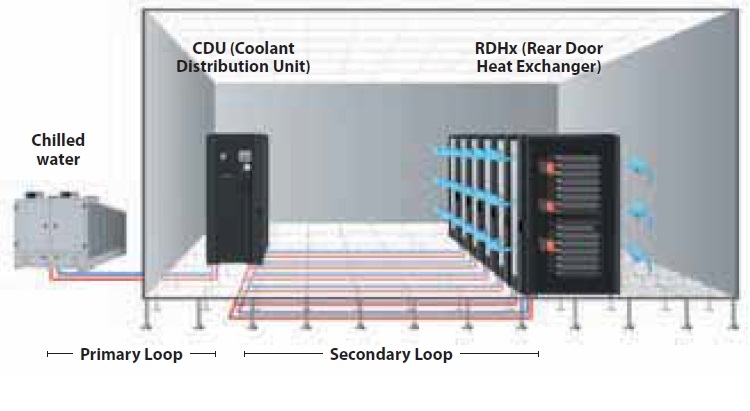High density zones

Over the past decade, major changes have significantly impacted data centre operations. With blades projected to represent over a quarter of all
server shipments this year, the growth of rack density shows no signs of slowing down. Rack densities of 20kW per rack and greater are possible today with increasingly dense server and storage hardware.
This increasing demand for power is causing many data centres to be at a tipping point – almost 80% of existing data centres around the world were built before 2001, most of which were designed to support less than 3kW per rack (for many, a lot less).
ADVERTISEMENT
But these have an insufficient power and cooling capacity to meet the requirements of modern server technologies. Making things worse, with one-third of data centres being pushed to enable a useful 30-year life, data centre owners are compelled to explore innovative approaches to support new technologies and new business growth with existing assets.
New thinking in data centre design is required when trying to support these loads that are eight to 10 times the design capacity, but the costs can be extreme (tens of millions). With many clients looking towards the cloud, re-evaluating the cost of IT and how they provide it, few businesses are
rushing to invest in a new data centre.
Indeed many of IBM’s clients’ data centres were built before 2001 and were not designed to accommodate the heat densities and power requirements of today’s high density computing devices, which are growing by as much as twenty times this decade. But nobody wants the cost, complexity and disruption to a 24/7 operation to retrofi t an existing data centre to accommodate this new technology.
However, supporting these loads in an existing data centre is possible by creating ‘zones’ for the high density equipment – these zones are specifically designed to provide direct, local cooling (close coupled) dedicated to the high heat-load equipment rather than trying to cool the entire room to support increasingly dense heat loads.
IBM’s solution to the problem is the deployment of high density zones, which allows our clients to quickly deploy high density equipment in existing data centres in less time and at lower cost than traditional data centre retrofits. In addition, it allows clients to defer capital expenditure.
Another downside to retrofitting an existing raised floor space to accommodate these kinds of loads is that it would require the addition of more and more CRAC units which take up valuable floor space that could otherwise be used for IT equipment racks. There is also the risk of significant disruption of the raised floor environment, with no guarantees that the existing raised floor can adequately deliver the volume of air needed to cool the high density equipment (increased raised floor heights might be need to deliver adequate volumes of air). Hot spots are more likely as a result, risking the operational up-time of new technology.
SUPPORTING RAPID DEPLOYMENT
WITH LIMITED DISRUPTION
Typical high density zone implementations would support 5kW to 25kW per rack and can be deployed in around eight to 12 weeks, depending
on requirements. Using best practices in data centre design with a hot aisle-cold aisle configuration for improved energy efficiency, clients receive a modular solution with standard 19-inch racking, close-coupled cooling along with power and monitoring capabilities as required.
Close-coupled cooling provides ‘rightsized’ cooling directly at the heat source, to help meet the real-time demands of your IT hardware and minimise the heat impact to the rest of the existing data centre.
As no major site retrofit is required, the high density zone off ers a relatively nondisruptive implementation at the existing site during physical infrastructure installation.
It’s important to verify what, if any, changes are required to the target site ahead of time, and then provide end-to-end planning and design services for the solution. Typically, IBM would fit-out the site, install and test the zone and turn over the solution to the client’s site operations personnel for final testing.
-
ADVERTISEMENT
-
ADVERTISEMENT

